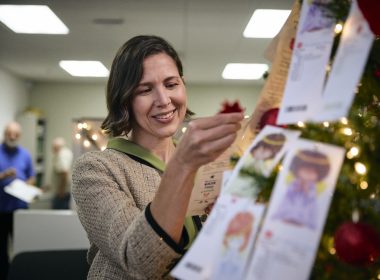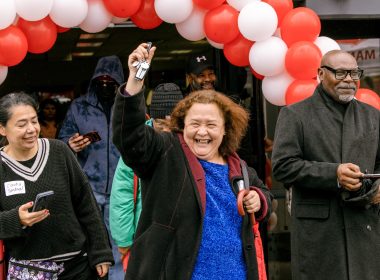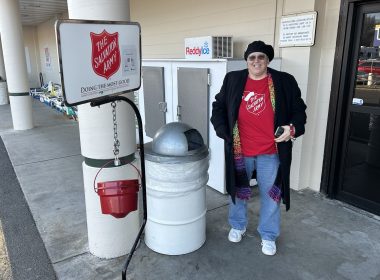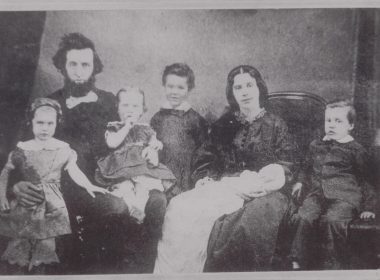Salvation Army’s Railton Place offers hope for the future.
The future for “aged-out” foster youth—those now legally considered adults—is often uncertain. The Salvation Army’s Railton Place, located adjacent to the Kroc Center in San Francisco, offers resources to help these young people.
Harsh statistics
When they age out of foster care, many young people enter a path riddled with roadblocks. Left with few job skills and limited employment opportunities, they may remain unproductive, possibly relying on criminal activities to meet their needs—statistics report over 30 percent selling drugs or prostituting to earn money.
A recent study by the Anne E. Casey Foundation found 51 percent of former foster youth unemployed four years after leaving foster care. Within two years of transitioning out of the system, the median annual income of former foster youth was less than $5,000.
Building a future
Railton Place looks to change these statistics. In its short existence, it has provided dozens of aged-out foster youth the means for personal and professional development, along with a safe and affordable place to live.
A highlight of Railton’s efforts is its new internship program. During the summer, three former foster youth undertook a three-month professional internship at The Salvation Army’s Golden State Divisional Headquarters (GS DHQ) in San Francisco. The interns, participants of the Young Emancipated Adults (YEA!) program, gained first-hand experience in a variety of departments. This partnership between Golden State’s Social Services Department and Railton Place launched in June and is the first time GS DHQ has hosted interns from a program within the division.
Railton Place Administrator Captain Lisa Smith and YEA! Program Director Geoffrey Lippert devised the idea for the internship opportunity. The YEA! program consists of case management and life skills classes. Patrick Okoh, life skills coordinator for Railton Place, holds a job readiness class, offering help in resume preparation, interview techniques, job search, and stress management. An internship is a logical next step, providing a simulated job search process by contacting appointed GS DHQ department representatives to request an interview, submitting a resume and cover letter and then participating in a panel interview. Once placed in a position, interns are assigned a supervisor and receive the necessary coaching to fulfill their duties within the department. Participating departments included Development, Social Services, San Francisco Metro Coordination, and the R.E.A.C.H Program (utility assistance).
Testimonials
“This internship has helped me gain self confidence,” said one youth who worked in the Development department. Interns also gain other competencies, such as time management and communication skills.
“This program opens the door to the working world,” said Lippert. “It shows them how to develop and enhance a professional work relationship and meet deadlines.”
Interns receive feedback along the way, including a 45-day performance evaluation and an exit interview, which are shared with their case managers and Okoh, so that a wraparound approach to their skill development is ensured.
This summer, interns built their basic administrative skills, managed contact databases, conducted outreach to volunteers, and worked on special events— from fundraising luncheons to back-to-school backpack distributions. One young person who interned in the San Francisco Metro Coordination Department plans to apply for an open position with the Army in the future.
“Most of all, I enjoyed working at the special events and helping a variety of people,” said the intern. “I’ve never done anything like this before and I hope I have opportunities to do more.”
The staff at Railton Place is committed to doing whatever it takes to ensure the youth complete the program as self-sufficient persons capable of successfully obtaining meaningful employment—beating the odds facing the majority of former foster youth who end up unemployed.
Smith is already scouting other locations in the division that would provide quality internships for the youth. In the fall, interns will be placed at the Harbor House Childcare Center.
OVERVIEW OF RAILTON PLACE
The Salvation Army’s Railton Place is a 110-unit, transitional and permanent residence for individuals who cannot afford housing. Of these units, 27 are provided to youth between the ages of 18-24 who have “aged out” of the foster care system. Another 83 units are available to chronically homeless adults and veterans, adults in recovery, and graduates of The Salvation Army’s Harbor Light program and adult rehabilitation centers. The building features state-of-the-art studio apartments, completely furnished and outfitted with energy-star rated appliances and natural stone kitchen countertops. Three units are reserved for resident advisors.
The facility is named for Salvation Army pioneer, Commissioner George Scott Railton, who lost both of his parents when he was only 15 years old. Like many of today’s aged-out foster youth, he found himself homeless, penniless, jobless and orphaned. But thanks to William Booth and The Salvation Army, Railton received a second chance and a new purpose in life and, eventually, was responsible for bringing The Salvation Army to the United States.
Along with housing, residents have access to on-site program support services. A unique feature is the Emancipation Fund, a mandatory savings account created for each aged-out foster youth. Each month, half of the $200 rent is deposited into the fund and The Salvation Army adds another $50. When the youth complete the two-year program, they receive the money, which will help with future rental deposits, furniture purchase and other expenditures of an independent life.
Railton House programming includes case management and life skills classes. Residents also receive memberships to the adjacent Ray and Joan Kroc Corps Community Center, providing them access to the community center’s basketball court, weight room, pool, dance studio, computer room, and other services.










